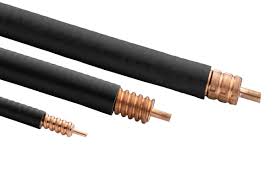
| How to differentiate the types of network cables? |
| There are three primary types of network cables that are used in modern communication systems: fiber optic coaxial, and twisted pair. Each of them can be used for different purposes and is therefore unique. However, they have something in common, they all can perfectly work for network communication. So how is each one different in terms of specifications and features? What are the differences in performance and capacity between fiber optic cables, twisted pair cables, and coaxial cables?. We will analyze their main characteristics to find out. Fiber Optic Cables Fiber optic cables, also known as optical fiber cable, is a type of Ethernet cable that consists of one or several optic fibers used to transmit data. Fiber optic cable transmits data by sending light pulses through tiny tubes made of glass. These cables have a transmission capacity 26,000 times greater than twisted-pair cables. These types of cables can be classified into single-mode fiber and multimode fibers. A single-mode optical fiber only allows one mode to propagate at once. It has a smaller core. In contrast, multimode fiber cables have a larger core that can simultaneously carry multiple light rays. The single-mode fiber cable can transmit for several kilometers, while multimode fiber is able to do it for up to 550m over a 10G network. Twisted Pair Cable Twisted pair cable is used frequently for telephone communications and modern Ethernet Networks. It is a type of wiring where two conductors in a single circuit are twisted., making a circuit that can transmit data. To protect against noise from adjacent pairs, the pairs are twisted together. Coaxial Cable Coaxial cable (or coax cable) is a popular choice for many applications; however, it is mainly used to transmit high-frequency signals. It is made up of a copper conductor with three layers of insulation and shielding that prevent crosstalk from motors, lighting, and other sources of EMI. The shield construction allows for longer coaxial cables between two devices. There are many versions of this cable available, but only two – RG59 and RG6 – are most commonly used in residential applications. The name “RG” is a World War II term that means “radio guide”, but it doesn’t mean anything today. What is the difference? These three types of cables, in some scenarios, have similar uses, but it is possible to differentiate them for their performance and capacity. Coaxial cables and twisted pair cables are built using copper or copper-based wire and are surrounded by insulation with other materials. Both can transmit television, telephone, and data using electrical signals. Fiber optic cables, on the contrary, can send out the same signals at a higher frequency, with a wider bandwidth and faster speed. They are made from delicate, flexible tubes of plastic or glass. Which one is cheaper? Fiber optic cable is generally more expensive than copper because of its superior performance and capacity. However, prices for coaxial, twisted pair and fiber optic cables vary among vendors and suppliers in the cable market. It is crucial to compare these cables before you buy them. If you would like to receive a quote for any of custom cables or connectors, please do not hesitate to contact us by sending an email to sales@cccoa.com or calling us at (972) 638-9309. |
